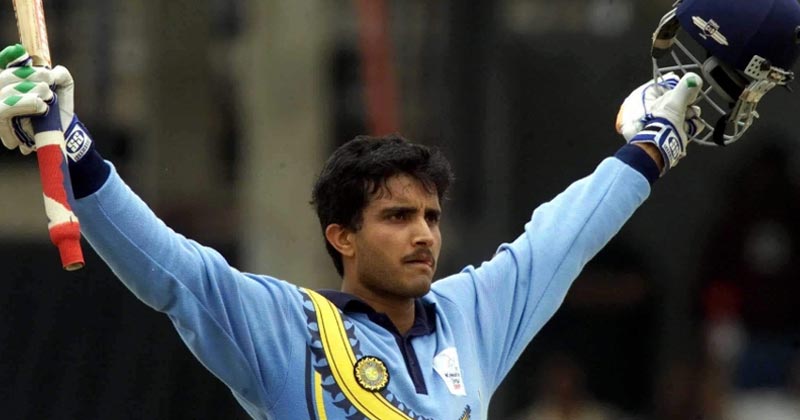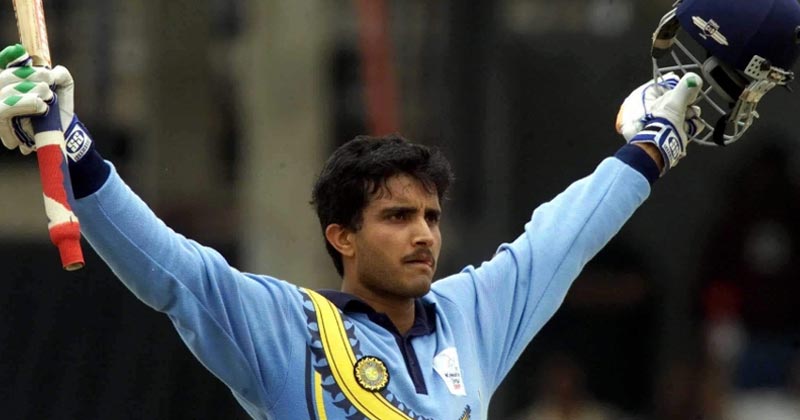There were seldom any shades of grey with Sourav Ganguly. For his admirers, he was the messiah who dragged India cricket centre stage. For his detractors, he was lazy and arrogant. The truth, as always, fell somewhere in between those two poles. The one thing beyond dispute, however, was the admiration he commanded, and continues to do, among Indian cricket fans. Long after his international career was over, during the slow IPL fade to black, stadiums across the country would greet him with rapturous acclaim.
What can you say of a career that spanned 113 Tests, 311 ODIs, and well over a decade? There are enough snapshots there to fill a room’s worth of albums, but as he turns 51, we will focus only on two images, a few years apart, to understand just what Ganguly meant to Indian cricket.
The first is from Potchefstroom, in South Africa’s northwest, in December 2006. Ganguly had been dropped from the side at the end of the Pakistan series earlier in the year, and had played no part in the home series against England or the visit to the Caribbean. But after debacles in a Tri Series in Malaysia and the Champions Trophy on home soil, the selection panel headed by Dilip Vengsarkar was running out of patience with the Rahul Dravid-Greg Chappell regime.
Those that had taken Ganguly’s place hadn’t made their chances count, and after India were thumped 4-0 in the ODI series in South Africa, a familiar face was named in the Test squad. By the time Ganguly landed in Johannesburg, the rest of the squad was already in Potch, preparing for a warm-up game ahead of the first Test.
Within minutes of driving there from Oliver Tambo Airport, Ganguly was making his way towards the nets. There was a frosty handshake with Chappell, before he moved on to join the practice. Gradually, the other players finished up, but Ganguly kept batting, eager to come to grips with vastly different conditions. Even those journalists who usually never bothered with practice stood with their faces pressed against the wire mesh behind the nets.
Another of those watching was Sreesanth, whose masterful seam presentation and accuracy would inspire a famous Indian victory at The Wanderers less than a fortnight later. “I’ve always been such a fan of Dada,” he said to the couple of journalists standing near him. Then, he quickly looked around nervously, to make sure he hadn’t been overheard. It was such a poisonous time that a junior player couldn’t openly express his admiration for someone who was, at the time, India’s most successful Test captain.
It had been very different three years earlier, when India arrived in Brisbane for the first Test of Steve Waugh’s farewell series. Australia were still smarting from their loss in the epic series in India in 2001, though there had been a measure of retribution in the 2003 World Cup final. The scheduling of the match in Brisbane was no coincidence either. Since a West Indies win in 1988-89, a generation earlier, the “Gabbatoir” had been a venue where visiting teams went to get hammered.
At his pre-match press conference, Ganguly was told none too subtly that he could expect plenty of ‘chin music’. Glenn McGrath was injured, and Shane Warne suspended, but Australia could still call on the class and pace of Jason Gillespie, and the unrelenting work ethic of Andy Bichel, a formidable bowler in those conditions. As for Nathan Bracken, left-arm pace had always been a blind spot for India’s batters.
When Australia piled up 262-2 on a rain-interrupted opening day, the local Courier Mail wasn’t slow to put the boot in. “India Summer Over?” asked its headline the next day. Ganguly walked out to bat with India 62-3 on the fourth morning – only 22.2 overs of play had been possible over the previous two days – and the reception was lively to say the least. The promised chin music wasn’t slow to arrive either.
Bichel smashed one into his shoulder, and other short deliveries invited awkward evasive action. But from the moment he marked his guard, it was apparent that Ganguly meant business. He wasn’t there just to survive either. Each time the bowlers erred, that gorgeous cover-drive would be unfurled, or a deft deflection would send the ball speeding to the rope. There were even a couple of pulls for good measure.
He batted nearly five hours and faced 196 balls for his 144. There were 18 fours, and when he completed the run that took him to three figures, he kept on sprinting till he was a third of the way to the sightscreen.
The hardcore Australian support, with their yellow T-shirts and Boxing Kangaroo flags, didn’t like him much. Some of them insisted that he and Harbhajan Singh had shown the middle finger in the aftermath of the unforgettable win at Eden Gardens in 2001. But as Ganguly stood with arms aloft, soaking in the applause from the Indian fans dotted across the Gabba’s cavernous stands, those who had heckled him just hours earlier also rose to acknowledge a magnificent innings. There was no love there, but there was plenty of respect.
That was Sourav Ganguly – the Prince of Summer.






